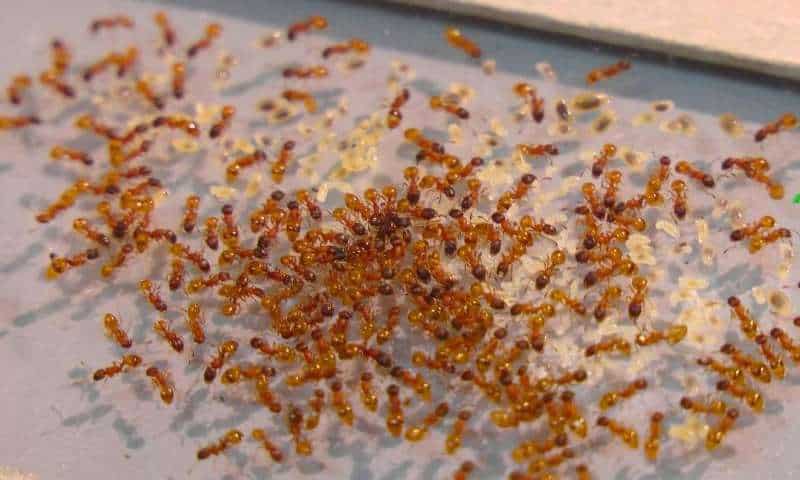Ant colonies are incredibly complex systems — the tightly knit, intensely cooperative colonies are closer to a single superorganism than to human societies. Researchers form the University of Bristol wanted to know how this single mind of the hive reacted to distress, and subjected colonies of migrating rock ants to differing forms of simulated predator attack to record their response.

Led by Thomas O’Shea-Wheller, the researchers subjected ants to simulated predator attacks to investigate the extent to which colonies of rock ants behave as a single entity.
Image via phys
By studying the ants responses, the team observed different reactions depending on where the attack was performed. When targeting scouting ants, that stay primarily at the periphery of colonial activity, the “arms” of foraging ants were recalled back into the nest. But when they targeted the workers at the heart of the colony, the whole body of ants retreated from the mound, seeking asylum in a new location.
The team was able to draw some pretty interesting parallels with human behavior. The first attacks could be compared to burning your hand on a hot stove, while the ones centered on the workers were more dangerous, kind of a ‘house on fire’ scare. And in each scenario, the ants reacted surprisingly similar to any animal with a nervous system — an involuntary reflex reaction to retreat from the damaging element in the first case, and a flight response from a predator that can’t be defended against in the later simulations.
“Our results draw parallels with the nervous systems of single organisms, in that they allow appropriate, location dependent, responses to damage, and suggest that just as we may respond to cell damage via pain, ant colonies respond to loss of workers via group awareness,” said Thomas O’Shea-Wheller, a PhD student in Bristol’s School of Biological Sciences and one of the authors of the study.









